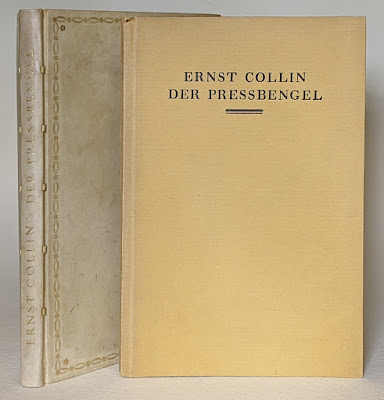It is past due time for another Ernst Collin related update, something I have tried to do on his birthday of 31 May. As with the last one, there have been few new findings. Much of that does back to my slower pace of life, yet I was still able to find some things.
Of most interest was making use of our Ancestry.com subscription to search for anything on the Collins. Successes were to be had, also in terms of the "other Ernst". These certificates are the only official confirmation of the other facts that led to the disambiguation of these two Ernsts previously described in the "Tale of Two Ernsts" from 2013. Ernst Heinrich and Else were "deported" to Auschwitz where they were murdered in December 1942. Heinrich Ernst and Margareta were able to emigrate.
The first is a birth certificate for Ernst Heinrich Collin (note the name), son of Georg and Regina Collin.
 |
Ernst Heinrich Collin, born 31 May 1886 to Georg and Regina Collin. Note the dated stamps at right. The top indicates that per the Namensänderungsgesetz, Israel was added to all Jewish males, and Ernst on 18 March 1939. The stamp below from 1952 rescinds that law and removes the Israel. |
Below the marriage certificate for Ernst Collin and Else Cronheim dated 13 November 1913. Note again the stamps at right adding Israel and Sara to Ernst's and Else's names, as well as the stamp rescinding that law.
 |
| Marriage certificate for Ernst Heinrich Collin and Else Cronheim. |
After finding these documents, it was not difficult to find the marriage certificate for the "other" Ernst. Heinrich Ernst Collin (note the name and compare to "our Ernst") was married to Margareta Weisgerber on 4 October 1923. There are no stamps with name changes, perhaps because they were able to emigrate before ... However, to provide continuing material for confusion, his collection at the Leo Baeck shows him as Ernst Heinrich, with a birthdate of February 10th (the marriage certificate says the 20th), however the address of residence on Hubertusalle matches that from the 1928 Addressbuch...
 |
| Marriage certificate for Heinrich Ernst Collin and Margareta Weisgerber dated 4 October 1923. |
I was also able to find similar documentation for Georg and Regina Collin (Ernst Heinrich's parents) as well as Getrude Collin (Ernst's sister) who continued the firm of W. Collin, and who passed in London (UK) 28 September 1986.
In December of 2022 I received a copy of Meisterhafte Unikate, the catalog to, and history of the Meister der Einbandkunst's (MDE) 100th anniversary exhibition. Notable was the large number of Ernst Collin citations in the sections about the early history of the MDE.
In other news, in early 2023 I got the kind of email that made may day in a wonderful way. A colleague shared some images of a very large multi-volume set that had come into the conservation lab at Johns Hopkins University for some work before being returned to its rightful place in the collections. The set had come to attention because it had decorated a retiring library Dean's office... What made the set special to me was that the set had been bound by W. Collin, Court bookbinders in Berlin, and came with some important provenance.
Finally, Google Maps recently updated its Streetview images for Berlin, and the Stolpersteine can finally be seen, sort of. Read the story of how they were placed here.
 |
| Detail from Google Streetview of Cicerostr 61 in Berlin. |









%20sm%20b.jpg)
%20sm.jpg)
%20sm.jpg)










.jpg)
























